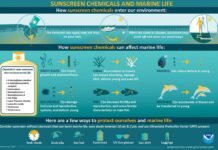Like many biotech pioneers, Irwin believes that GMOs offer solutions to agricultural plagues such as drought, disease, pests, and excessive pesticide use. She remembers brainstorming with colleagues at Scripps Research Institute in 1988 about how to reduce the toxic chemicals used in agriculture. They started looking for ways to fortify crops with naturally occurring pesticides.
Here’s where the story gets complicated. The world’s biggest chemical companies also saw the value in biotechnology. In the mid-’90s, Monsanto and other agrichemical corporations released corn, canola, and cotton plants engineered to express a gene from the common soil bacterium Bacillus thuringiensis, which kills Lepidoptera larvae. Theoretically, these crops wouldn’t need much spraying at all. Monsanto additionally released RoundUp Ready corn and soybeans — crops engineered to survive direct applications of glyphosate, the active ingredient in their bestselling pesticide, RoundUp. The idea was that RoundUp would replace more-toxic alternatives.
(After two decades and 173 million acres of GMO crops planted in the U.S., it’s still unclear whether they have delivered on the promise to reduce farmers’ use of toxins. Conflicting studies show both reductions and increases in pesticide application nationwide. Additionally, farmers’ overreliance on RoundUp has created glyphosate-resistant “superweeds,” which require the use of stronger chemicals.)
The Food and Drug Administration (FDA) determined the various GMOs “substantially equivalent” to their unmodified counterparts and approved them for sale. Ethical issues sprouted up immediately. For example, if GMOs are substantially equivalent, why are their creators granted patents for them? Critics pointed to the chemical-turned-seed-companies’ track records: decades-long histories of polluting communities with products they once claimed were safe. Why trust them with our primary crops?
While debates over this new technology commenced around the globe, the six biggest biotech companies — Monsanto, Dow AgroScience, Syngenta, DuPont Pioneer, BASF, and Bayer CropScience — established farms in Hawai‘i, where they could capitalize on the year-round growing season. Almost overnight, the Islands became the “corn belt of the Pacific.” In addition to seed corn, the biotech firms now grow transgenic soybeans, sunflowers, cotton, and wheat here. Hawai‘i’s seed-crop industry (both GMO and conventional) grew by a staggering 548 percent over the last decade. By 2012, it was worth $243 million — triple the value of sugarcane, the state’s next-largest agricultural commodity. Today, the majority of corn planted in the U.S., Argentina, and Brazil originates on Monsanto’s 3,500 acres on Maui and Moloka‘i.





